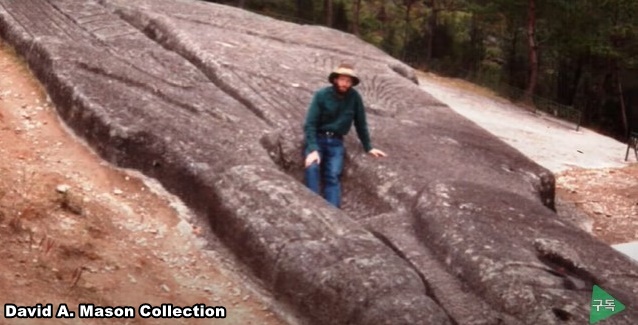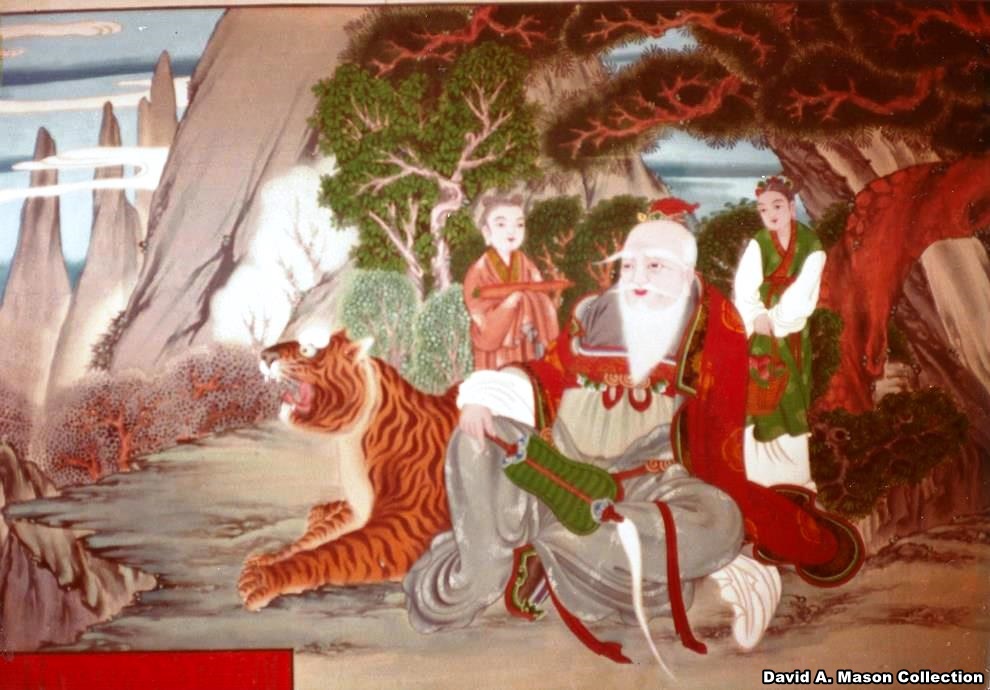Living History – David A. Mason (Professor – 1982)
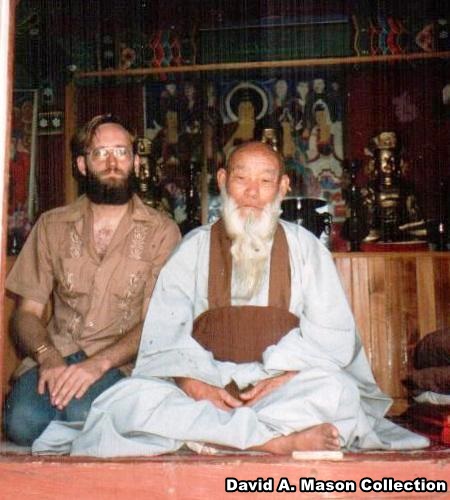
One of the great things about running a website about Korean Buddhist temples is that you get to meet a lot of amazing people. And a lot of these amazing people have varying backgrounds, interests, and insights. Rather amazingly, some of these people first visited Korea in the 1960s, 1970s, and 1980s. Here are their stories!
*Editor’s Note: You can take a tour with David A. Mason to any temple in Korea. He is a wonderful tour guide. He has been doing it for decades, and it shows in both his professionalism and insights. To contact Prof. Mason for any of his tours, you can either contact him through Facebook or through his great website.
1. Where are you originally from? Introduce yourself a little.
I grew up in the suburbs of Detroit, Michigan, a pretty extreme case of “WonderBread America” I would say – not much cultural diversity. So I became fascinated by other religions and cultures, and the hobby of traveling, pretty early. The rest of my family had very little interest in travel, tended to fear the uncomfortable and unfamiliar. But being in the Boy Scouts for five years gave me a good education in how to travel independently, take care of yourself, navigate, to deal with hardships – that was really valuable. In high school days, I fell in love with big beautiful mountains like the Rockies and Sierras, considering them to be truly holy places, and became a strong environmentalist favoring preservation; I might possibly have become a national park ranger. I also developed a fascination with China and Native Americans, especially their spiritual philosophies, as a stark contrast to the harmful trends of western capitalism. Also, natural foods and natural medicine seemed to me to be the best ways to go. This all combined together with the general identity as a 1970s “hippie” to form the person that I became.
2. When and why did you first come to Korea?
I studied what I could about China at the University of Michigan. I discovered the Lonely Planet style of “backpacker traveling” in a San Francisco bookstore in 1981, which followed well upon my Boy Scouts training. I managed to get on a plane to Hong Kong that November, with just a backpack and $1000 in my pocket – quite the reckless adventure. I wanted to be one of the first to get into China, but it was still closed then – so I started traveling around its southeastern edges: Philippines, Thailand, Hong Kong again, Taiwan and Japan. When I ran out of money, I settled for six months in Taiwan teaching English, and found I was pretty good at that. An experienced traveler suggested I should check out South Korea, which I still knew nothing at all about, just had a vague sense about the Korean War and political troubles more recently. I decided to try it, and quickly became fascinated to discover that it’s not an appendage of China nor an appendage of Japan, but a unique third country in between them. It was such an unknown country when I arrived in July 1982, with very few books in English available, relatively very little information in English at all, not many who knew anything beyond the superficial about it except the academic members of the Royal Asiatic Society – Korea, whom I was fortunate to get to know pretty early.
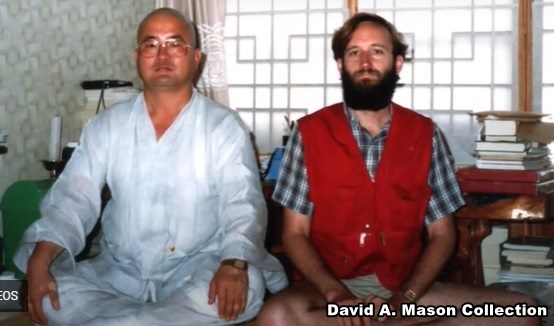
3. When you first came to Korea what city did you live? Did you subsequently move around?
I started teaching English in downtown Seoul, and living first in Gwanghwamun, then Itaewon, then teaching and living in Gangnam for awhile – totaling one year. Had a serious girlfriend, but that didn’t work out. Traveled to some national parks and the ancient capital Gyeongju, becoming ever more fascinated. Then in the spring of ’83 China finally opened the door for individual travelers, and I flew back down to Hong Kong – I was #978 to get in! A grand crazy adventure for six weeks. After that I thought I had achieved my East Asian Travel Dream of almost two years, and returned back to North California to learn and teach Macrobiotics at a new-age/hippie hot springs resort, and other wild adventures. But for two years I kept thinking about Korea and looking at the amazing photos I had collected, noticing that I kept talking about Korea and showing those photos to others at parties and such – the hook was planted in me!
So in January 1986, I flew back to Korea and restarted teaching English in Seoul. But then in late February there was an ad in the paper for a job teaching Hotel English in Gyeongju, part of the preparations for the 1988 Seoul Summer Olympics, and I jumped on that real hard – getting to live there was my dream! – and then for two years my life there was really wonderful, learning and experiencing so much. But then there were some employment difficulties, and I had earned my master’s degree in English Education online, so by March 1988 I moved up to Gangwon Province’s capital Chuncheon to work in the National University there. I spent 11 pretty blissful years in all those great mountains, and two more in Wonju! Got deeper into tourism, and traveling all around this nation – managed to visit every single national and provincial park by 1995.
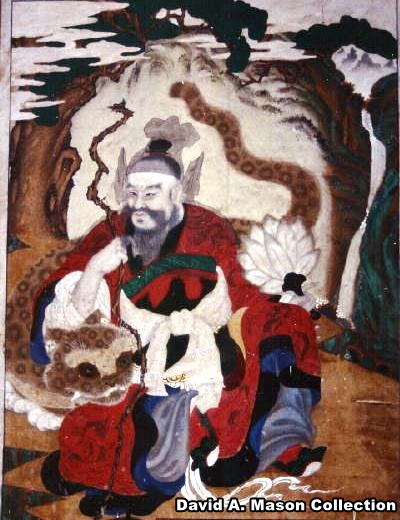
During those years I earned my second master’s degree in the History of Korean Religions at the Yonsei GSIS, joining right after it opened. I also wrote my first few books, including Lonely Planet’s first independent Korea edition, and culminating with my Sanshin book “Spirit of the Mountains” that got me a fair amount of media and academic recognition. As a result of that, the national Ministry of Culture and Tourism hired me as a consultant for five years starting in 2001, because Korea was hosting the 2002 World Cup and needed innovative new tourism programs; for example we developed the TempleStay program with me doing all the English for it. That required me to move back into Seoul, which I was very reluctant to do – but I discovered that it had become far more livable then it was back in the early ‘80s. Except for some short stints back in Gyeongju and in Cheonan, I’ve lived in Seoul ever since and I’m quite comfortable with that by now – it has become a great city. When I quit working for the government in late 2005, I was recruited by the nation’s biggest Tourism college to become a cultural tourism professor, and I did that wonderful job for 17 years until my retirement a year ago.
4. What was the first temple you visited in Korea?
I’m not really sure, but I think it was a few in Bukhansan National Park when some students invited me hiking in August. But my first really memorable one was Mt. Songnisan Beopjusa Temple in September, when I went on a tour given by the Royal Asiatic Society – Korea. I was really blown away by its spiritual majesty, the fantastic scenery around it, the great artworks and that giant statue of Maitreya (the cement one at that time). It was there that I first found a Sanshin-gak Hall and became fascinated by that whole phenomena, leading to my hobby and career.
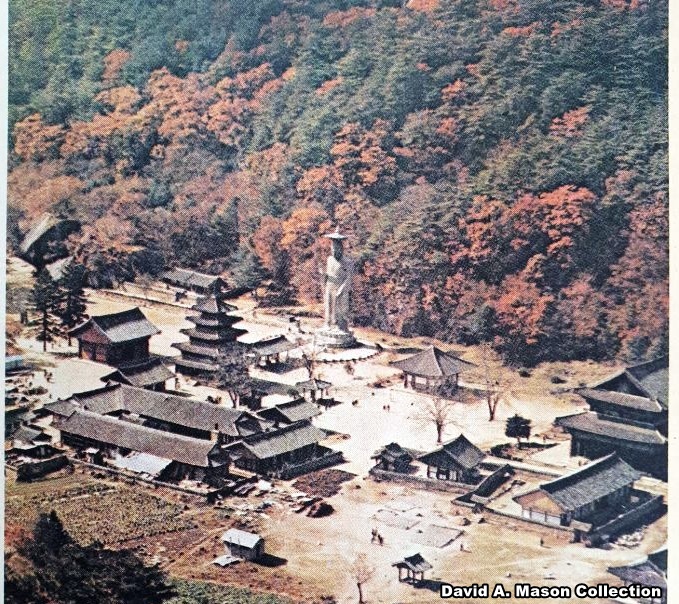
5. What drew your interest to Korean Buddhist temples? (Buddhism, architecture, art, history, etc)
I had studied Chinese and Japanese temple architecture and artworks at the university, so was reasonably familiar with most of what I saw, but was impressed by the unique characteristics. In particular what has always attracted me is the strong amount of Chinese Daoism blended-in to the Korean Jogye Buddhist temples [the largest Buddhist order in Korea], something you just don’t find in other countries. In China you have to choose between those two rival religions, but in Korea I found them blended together in a very pleasing fashion and was happy to be able to enjoy both. The Sanshin-gak Halls have always been the best example of this!
6. What is your favourite temple? Why?
Ah, I have put a lot of thought into this, and you and I have already discussed this very much, and we are very close to agreement. Long ago, I made my own list of the Top Seven Korean Monasteries [great temples], based on size, great history, spiritual profundity and tourism “wow” factor (something quite spectacular)… My list remains, in no particular order: Mt. Songnisan Beopjusa Temple, Mt. Taebaeksan Buseoksa Temple, Mt. Tohamsan Bulguksa Temple (including Seokguram Cave-shrine), Mt. Gayasan Haeinsa Temple, Mt. Moaksan Geumsansa Temple, Mt. Jirisan Hwaeomsa Temple, and Mt. Yeongchuksan Tongdosa Temple. There are several that just barely don’t make this list, for me. On my website, I also have lists of the Top 25, and the Top 108! I still haven’t quite been to all of the 108, despite having visited something around 3,000 monasteries, temples and hermitages.
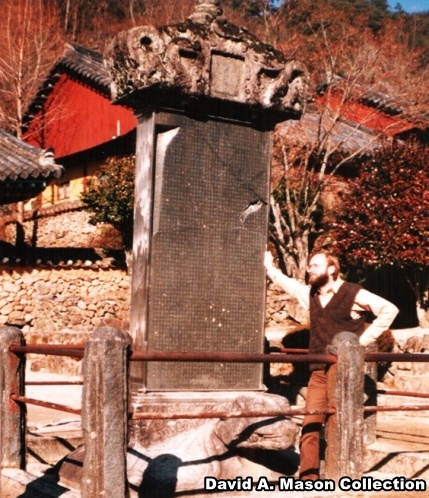
7. What temple or hermitage has changed the most from when you were first got here? What has changed about it?
Oh, lawd, hmmmmmm. Well, I’m going to say Mt. Samgaksan Doseonsa Temple in northeastern Seoul and Sinheungsa Temple in Seoraksan National Park – because in the 1980s both were so much more humble, quieter, but both have been visited by SO many pilgrims and tourists in the past three decades, with so much money donated, and have built up much more infrastructure and new artworks in response, that they are really very different! On the other hand, it’s remarkable how many of them have remained pretty much the same, except for now having paved roads going in, and much better monastic residences (including rest rooms and showers!) – I think Korea is so very excellent in preservation of historic religious authenticity, especially within the 45 national and provincial parks; exemplary country for that.
8. What was the most difficult temple to get to? How did you get there?
Oh, again a difficult consideration – in the first two decades here I was a great mountain hiker and got to many that were so remote, required so much driving on bad roads and then much climbing up steep pathways. Then I developed arthritis in my legs and that sort of adventure and hasn’t been possible. But anyway, I will mention two high hermitages on the central northern slopes of the great Mt. Jirisan, next big valley southeast of the famous Silsangsa Temple: Sangmujuam Hermitage and Dosolam Hermitage, quite obscure and difficult to achieve. The former one is where great Jogye Founder Bojo Jinul Guksa attained his third & final enlightenment, but only dedicated Korean Buddhist pilgrims know about it; the latter one even further up is tiny and so rustic, not on many of the maps, the single monk there so shocked to see me arrive, I really thought I might be the first Westerner to ever get there! Oh and I guess I should mention the much more famous Beopgyesa Temple on the southeast corner of that grand mountain-cluster – that one is visited by many hikers but was possibly the very hardest on my legs to accomplish, 1,400 meters high on a very steep and rocky trail.
9. Did you remain in Korea or did you return home?
Since 1986, I have lived in Korea continuously, although I started long ago spending every winter in Southeast Asia because I don’t like cold icy winters. This led to my marrying a Filipina and building my retirement house for our family in her very charming hometown. I now spend almost six months a year down there, and it is there where I suppose I will end my days, between the beaches and the hot-springs; when my aging physical condition gets so that I can’t return to Korea anymore, I’m really going to miss the mountain-temples more than anything else……
Everybody should see www.san-shin.org to see more of what I have discovered.
*Editor’s Note: You can take a tour with David A. Mason to any temple in Korea. He is a wonderful tour guide. He has been doing it for decades, and it shows in both his professionalism and insight. To contact Prof. Mason for any of his tours, you can either contact him through Facebook or through his great website.
